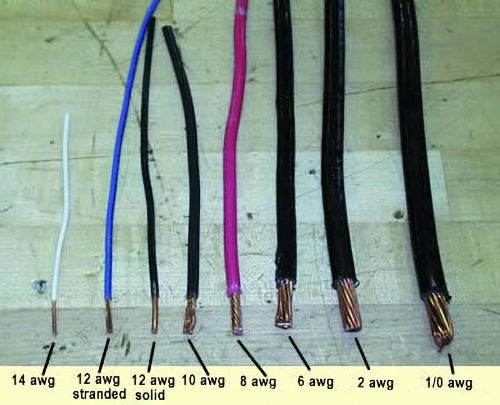Flexible Extension Cords
The OSHA construction standard requires flexible cords to be rated for hard or extra-hard usage.
These ratings are derived from the National Electrical Code, and your employer is required to make sure the cord is indelibly marked approximately every foot along the length of the cord.
Workers need to inspect extension cords prior to their use for any cuts or abrasion. Extension cords may have damaged insulation. Sometimes the insulation inside an electrical tool or appliance is damaged. When the insulation is damaged, exposed metal parts may become energized if a live wire inside touches them. Electric hand tools that are old, damaged, or misused may have damaged insulation inside.
Flexible cords used with temporary and portable lights must be designed for hard or extra-hard usage. They must be marked with usage type designation size and number of conductors. The cord could be marked with a 14/3 meaning the conductor size (AWG) is 14, and the number of conductors is 3.
Extension cords must be 3-wire type so they may be grounded, and able to permit grounding of any tools or equipment connected to them.
Limit exposure of connectors and tools to excessive moisture by using watertight or sealable connectors.
Wire Size and Ampacity
In terms of conducting electrical current, size matters (the size of the electrical conductor). Click on the button below and look at the table regarding ampacity, the current-carrying capacity of a conductor in amps. You'll notice two things: the amount of current a wire can safely carry increases as the diameter (and area) of the wire increases and as the number of the wire size decreases.
| Copper Wire Size (AWG) | Dia. (Mils) | Area (Circular mils) | Amps in Free Air | Amps as Part of 3-cond. Cable |
|---|---|---|---|---|
| 14 AWG | 64.1 | 4109 | 20 Amps | 15 Amps |
| 12 AWG | 80.8 | 6529 | 25 Amps | 20 Amps |
| 10 AWG | 101.9 | 10,384 | 40 Amps | 30 Amps |
| 8 AWG | 128.5 | 16,512 | 70 Amps | 50 Amps |
Knowledge Check Choose the best answer for the question.
2-8. The cord marked as 14/3 means _____.
You forgot to answer the question!

